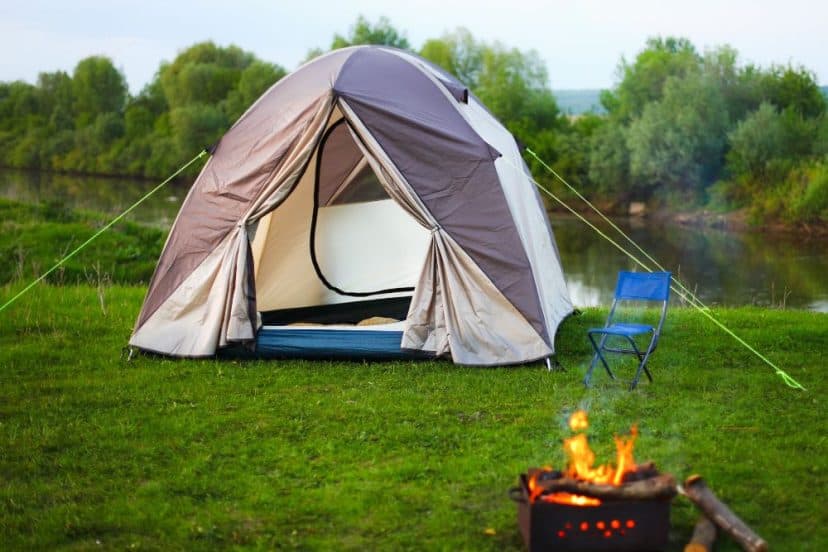Footprint Tent vs Tarp: Which One For Camping
Footprint Tent vs Tarp: Which is the Better Option for Your Camping Needs?
When it comes to camping, choosing the right gear can make all the difference in your experience.
One important decision to make is whether to use a tent footprint or a tarp to protect the bottom of your tent. Both options have their benefits and drawbacks, so it’s important to consider your needs and preferences before making a decision.
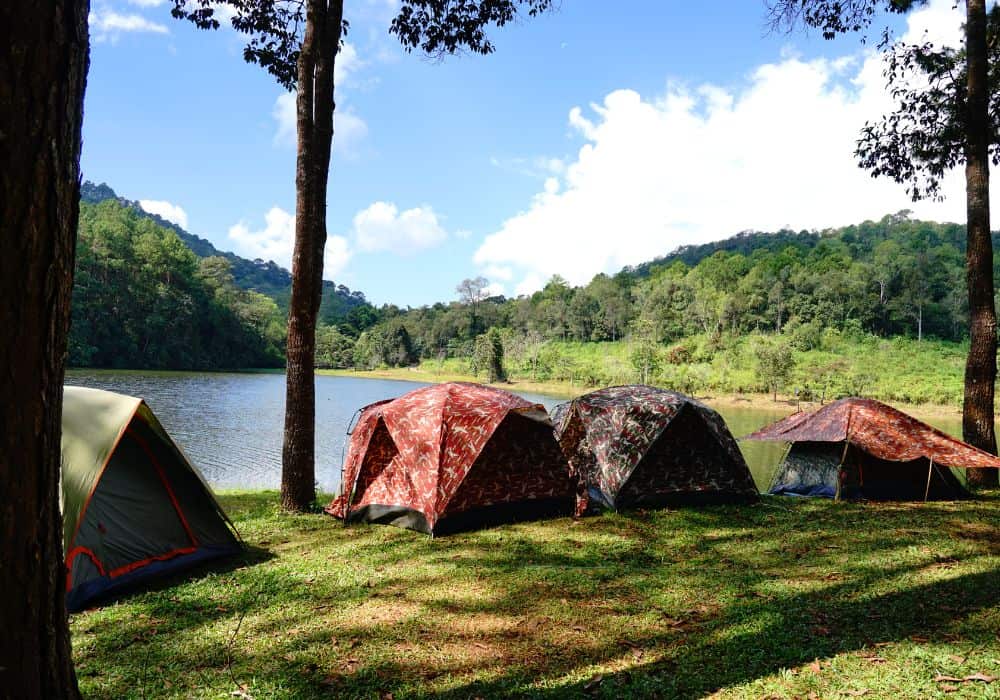
A tent footprint is a groundsheet that is specifically designed to fit under your tent and protect it from dirt, moisture, and damage.
It’s typically made of a lightweight and durable material, such as nylon or polyester, and is sized to match the dimensions of your tent.
On the other hand, a tarp is a versatile piece of fabric that can be used for a variety of purposes, including as a groundsheet for your tent.
While it may not fit your tent as precisely as a footprint, it can provide a larger area of protection and can be more cost-effective.
Understanding Tent Footprints and Tarps
When it comes to camping gear, tent footprints and tarps are two essential items that provide protection for the tent floor against wear and tear.
They are both designed to protect the tent from moisture, dirt, and sharp objects, and can also be used as a shelter from rain, wind, and direct sunlight.
However, there are some differences between the two that are important to understand before making a purchase.
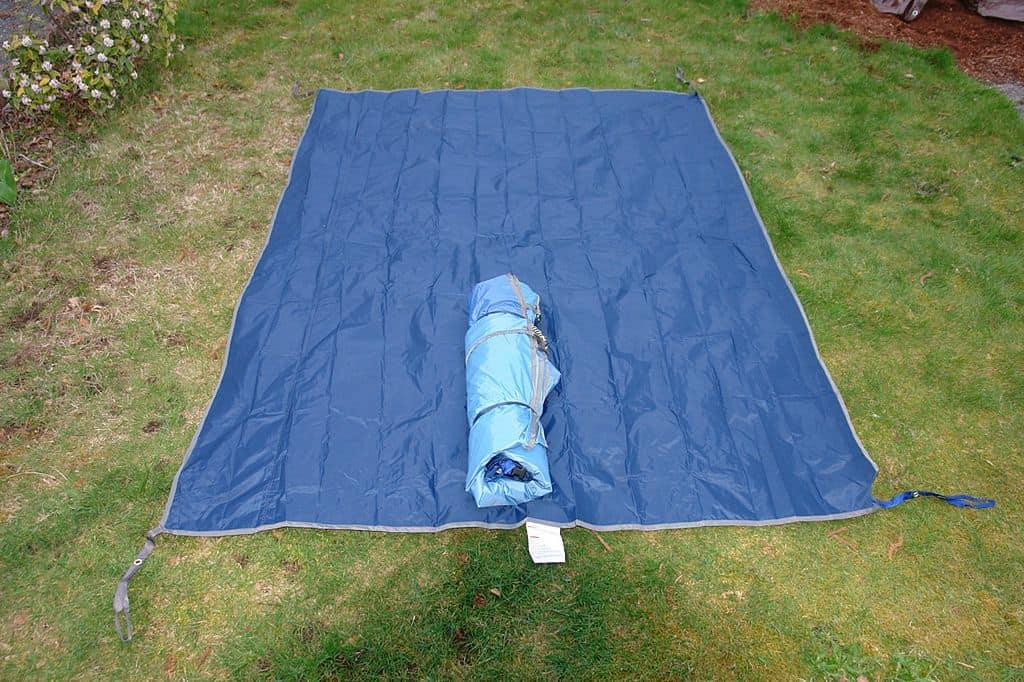
Tent Footprints
A tent footprint is a piece of fabric that is placed underneath the tent to protect the tent floor from moisture, dirt, and wear and tear. It is usually made of a durable and waterproof material such as polyethylene, Tyvek, or vinyl.
Tent footprints come in different sizes and shapes to fit different tents and terrains. They are easy to set up and can be customized to fit the tent floor by trimming the edges or punching holes for grommets.
Tent footprints are an affordable investment that can extend the lifespan of the tent by protecting the tent floor from damage. They also provide insulation and padding between the camper and the ground, which adds comfort and warmth. However, tent footprints are not as versatile as tarps and cannot be used as a shelter or a ground cover for other purposes.
Tarps
A tarp is a versatile piece of fabric that can be used as a shelter, ground cover, rainfly, shade, or even a front door mat. It is usually made of a lightweight and waterproof material such as nylon or polyester. Tarps come in different sizes and styles to fit different camping needs and terrains.
They are easy to set up and can be customized by adding grommets, holes, or rubber patches for friction and abrasion resistance.
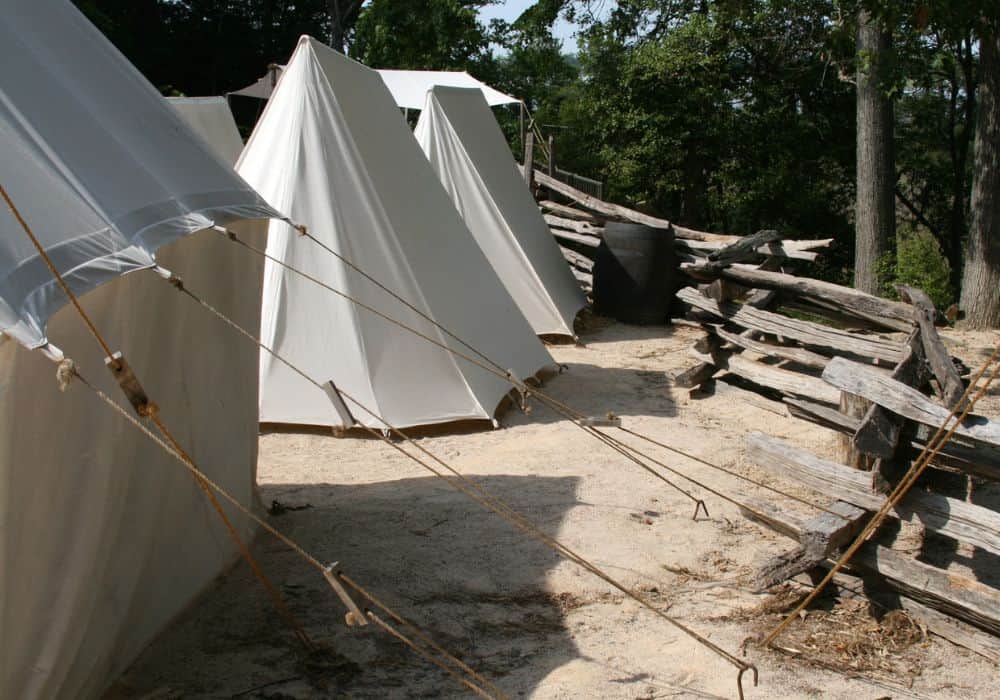
Tarps are a great alternative to tent footprints when camping in rough terrain or backpacking. They are lightweight and compact to carry, yet durable enough to withstand wind, snow, and rain.
However, tarps are not as protective as tent footprints and cannot provide insulation or padding between the camper and the ground. They also require more skill and creativity to set up as a shelter or a ground cover.
In conclusion, tent footprints and tarps are both essential items for camping gear that provide protection and shelter.
Tent footprints are ideal for protecting the tent floor from wear and tear, while tarps are more versatile and can be used for multiple purposes. The choice between the two depends on the camping needs, the terrain, and the budget.
Benefits of Using a Tent Footprint
Using a tent footprint offers several benefits to campers. Here are some of the main advantages of using a tent footprint:
Protection and Durability
One of the primary benefits of using a tent footprint is that it provides an extra layer of protection for the bottom of your tent.
A footprint can help prevent damage to your tent from rocks, sticks, and other sharp objects on the ground. It can also protect your tent from moisture, which can seep up from the ground and cause damage or mold.
In addition to protecting your tent, a footprint can also increase its durability. By reducing wear and tear on the bottom of your tent, a footprint can help extend its lifespan and save you money in the long run.
Comfort and Insulation
Using a tent footprint can also improve your comfort and insulation while camping. By providing an extra layer between you and the ground, a footprint can help insulate your tent and keep you warmer on chilly nights.

It can also provide a more comfortable surface to sleep on, especially if you are camping on hard or rocky ground.
Custom Fit and Versatility
Finally, using a tent footprint can offer a custom fit for your tent and increase its versatility. Many tent footprints are designed to fit specific tent models, which can help ensure a perfect fit and maximum protection.
Additionally, a footprint can be used on its own as a lightweight and waterproof shelter, making it a versatile addition to your camping gear.
Overall, using a tent footprint can provide several benefits to campers, including increased protection and durability, improved comfort and insulation, and increased versatility and custom fit for your tent.
Benefits of Using a Tarp
When it comes to camping, using a tarp as a groundsheet instead of a tent footprint has its own set of benefits. In this section, we will explore some of the advantages of using a tarp while camping.
Versatility and Adaptability
One of the biggest advantages of using a tarp as a groundsheet is its versatility and adaptability. A tarp can be used in a variety of ways, not just as a groundsheet for a tent. It can be used as a shelter, a sunshade, a windbreak, or even as a makeshift rainfly. This versatility makes it an essential piece of gear for any camping trip.
Affordability and Durability
Another advantage of using a tarp as a groundsheet is its affordability and durability. Tarps are generally less expensive than tent footprints, and they are also more durable. They are made of heavy-duty materials that can withstand rough terrain and harsh weather conditions.
This makes them a cost-effective option for campers who want to protect their tent from the elements without breaking the bank.

Easy to Pack and Carry
Lastly, using a tarp as a groundsheet is easy to pack and carry. Tarps are lightweight and compact, making them easy to carry in a backpack. They can also be folded or rolled up into a small size, taking up minimal space in a camping bag. This makes them an excellent option for backpackers or anyone who wants to travel light.
In conclusion, using a tarp as a groundsheet has many benefits, including versatility, affordability, durability, and ease of packing. While tent footprints have their advantages, a tarp can be a reliable and cost-effective option for campers who want to protect their tent from the elements.
Comparing Tent Footprints and Tarps
When it comes to protecting the bottom of your tent, there are two popular options: tent footprints and tarps. Both offer advantages and disadvantages, and the choice ultimately depends on personal preference and camping needs.
Protection and Durability
Tent footprints are designed to protect the tent floor from wear and tear caused by rocks, sticks, and other rough terrain.
They are typically made of durable materials like polyethylene, Tyvek, or vinyl, and are custom fit to the size of your tent. Footprints also provide a moisture barrier, which can help extend the lifespan of your tent.
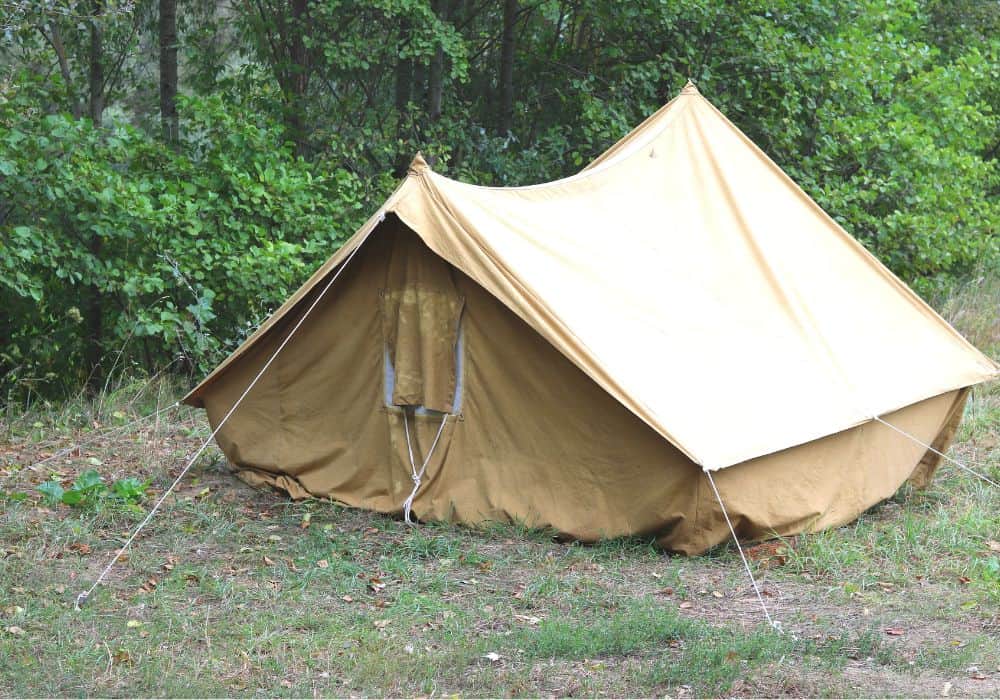
Tarps, on the other hand, offer more versatile protection. They can be used as a shelter from rain, wind, or direct sunlight, as well as a ground cover to protect the tent floor from dirt and moisture. However, tarps are not as durable as footprints and may not provide as much protection from sharp objects or friction and abrasion.
Waterproofing and Moisture
Both tent footprints and tarps can be waterproof or water-resistant, depending on the materials used. Footprints are typically made of waterproof materials like polyethylene or Tyvek, while tarps may be made of a variety of materials, including canvas, plastic, or lightweight materials like nylon or polyester.
When it comes to moisture, footprints are specifically designed to provide a moisture barrier between the tent floor and the ground. Tarps can also provide some moisture protection, but may not be as effective as footprints in wet or damp conditions.
Cost and Investment
Tent footprints can be a more expensive investment, as they are custom fit to the size of your tent and made of durable materials. However, they can also extend the lifespan of your tent and provide added protection. Tarps are generally more affordable and versatile, but may not offer the same level of protection or durability as footprints.
Customization and DIY Options
One advantage of tarps is their versatility and ability to be customized for different camping needs. They can be cut to size or shape to fit specific terrain or shelter needs. DIY tent footprints can also be made from tarps or other materials, offering a more affordable alternative to custom-fit footprints.
Pros and Cons
Overall, tent footprints offer more specific protection and durability for the tent floor, while tarps offer more versatility and customization options. The choice ultimately depends on individual camping needs and preferences. Here is a summary of the pros and cons of each option:
Tent Footprints
Pros:
- Custom fit to tent size
- Durable materials
- Provides moisture barrier
- Extends tent lifespan
Cons:
- More expensive investment
- Limited versatility
Tarps
Pros:
- Versatile protection
- Customizable for different needs
- Affordable investment
Cons:
- May not offer as much protection or durability as footprints
- Heavier and bulkier than footprints
Wrapping Up Footprint Tent vs Tarp
When embarking on an adventure in the great outdoors, especially tent camping or car camping, one crucial decision you will face is whether to opt for a tent footprint or a tarp to safeguard the floor of your tent.
The choice between a tent footprint vs tarp largely depends on various factors, including the nature of your camping trip and personal preferences.
Here, we explore the main differences between these two options, aiming to help you select the best option for protecting the base of your tent.
A tent footprint is essentially a protective layer designed to be placed between the ground and the floor of the tent. This additional layer serves to protect the tent’s floor from wear and tear, essentially extending the life of your tent.
Many tent manufacturers offer footprints specifically designed to match the right size and shape of your tent base, providing a seamless fit for your camping tent. This option is generally viewed as a good idea, as it offers a tailored solution for safeguarding the bottom of the tent.
On the other hand, a camping tarp can serve as a more versatile and often DIY option. A tarp can be used in different ways; not just as a protective layer beneath your tent, but also as a makeshift shelter, a ground cloth for picnics, or even as an additional layer over the top of your tent for added protection against the elements.
When using a tarp as a protective layer under your tent, it’s usually recommended to choose a lightweight material, which can be more easily adjusted to fit the specific dimensions of your tent base.
Choosing a tarp as your tent flooring option allows for customization, as you can select a material and size that suits your needs. If you opt for a DIY footprint, you have the freedom to design a ground cloth that meets your specific requirements, potentially saving costs while also getting a product that meets your needs perfectly.
Whether you opt for a tent footprint or a tarp, remember that the main goal is to protect the tent’s bottom and extend the life of your camping gear.
Whichever option you choose, ensuring it provides a robust protective layer beneath the floor of your tent will guarantee a more pleasant and worry-free experience in the great outdoors.
Ultimately, the best option will depend on your camping style and how you prioritize factors such as convenience, versatility, and the ability to customize your tent base protection.

